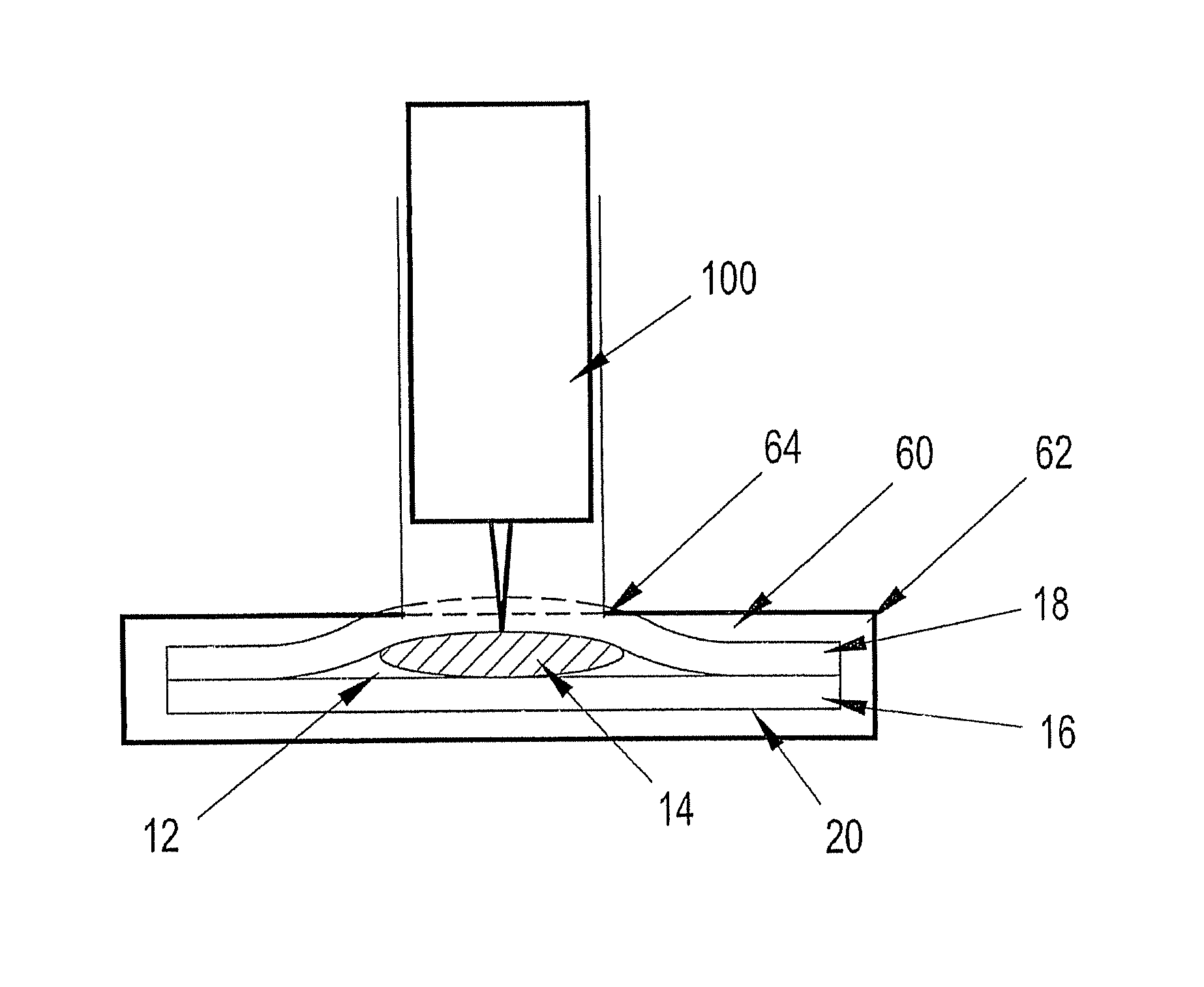Devices, Systems, and Methods for the Containment and Use of Liquid Solutions
- Summary
- Abstract
- Description
- Claims
- Application Information
AI Technical Summary
Benefits of technology
Problems solved by technology
Method used
Image
Examples
Embodiment Construction
[0037] Referring to FIGS. 1-21B of the drawings, exemplary embodiments of a liquid containment device constructed in accordance with the present disclosure are shown. Each embodiment of the liquid containment device is configured to contain a single dose of a liquid, such as a reagent or control solution, in a sealed, portable format.
[0038] The containment device may be provided individually as a singular unit or collectively as part of a pack or package where more than one of the containment devices are contiguous with each other. In certain embodiments the contiguous containment devices are easily separable from each other. Although not shown, the liquid containment device of the present disclosure can be further adapted to be loaded into a dispenser from which the containment devices may be individually or collectively dispensed.
[0039] Exemplary embodiments of a liquid containment device according to the present disclosure include three layers: two forming a sealed reservoir fo...
PUM
 Login to View More
Login to View More Abstract
Description
Claims
Application Information
 Login to View More
Login to View More - R&D
- Intellectual Property
- Life Sciences
- Materials
- Tech Scout
- Unparalleled Data Quality
- Higher Quality Content
- 60% Fewer Hallucinations
Browse by: Latest US Patents, China's latest patents, Technical Efficacy Thesaurus, Application Domain, Technology Topic, Popular Technical Reports.
© 2025 PatSnap. All rights reserved.Legal|Privacy policy|Modern Slavery Act Transparency Statement|Sitemap|About US| Contact US: help@patsnap.com



